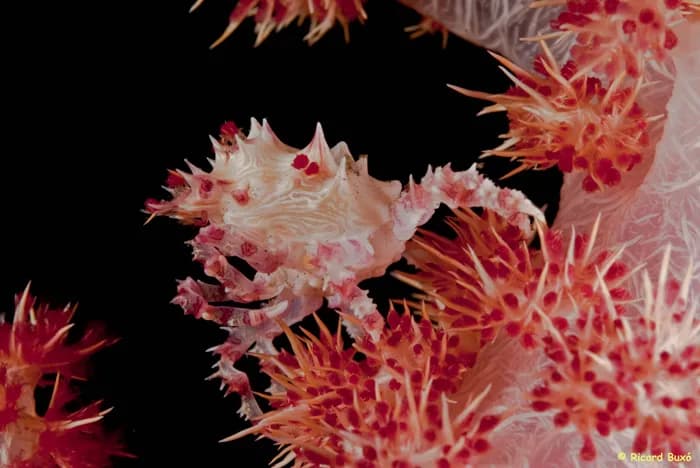
Home to the largest marine park in Indonesia, Cenderawasih Bay is a far-flung hard-to-reach destination relatively new on the diving scene. Best known for its proximity to Raja Ampat and reliable whale shark encounters, it's easy to see why it's gaining popularity with more adventurous travelers.
Scuba Dive Level
All Levels
Visibility
33 to 98 feet (10 to 30 meters)
Average Water Temperature
84
Whale Shark Encounters
Stunning Reefs & Corals
While Cenderawasih Bay may not match neighboring Raja Ampat for mind-blowing biodiversity, this remote underwater playground still boasts an enviable catalog of marine life and is quickly gaining a reputation as the go-to destination for awesome whale shark encounters.
For now, access to Cenderawasih Bay is limited to liveaboards, with cruises departing from various ports around the bay. Some boats combine a trip with diving in northern Raja Ampat, with many of these liveaboards departing from Sorong in West Papua. Some Komodo-based boats also visit Cenderawasih Bay.
Located on the east coast of Indonesias West Papua region, Cenderawasih Bay is the next frontier in remote Indonesian diving. Where Raja Ampat to the west of West Papua is still deemed by many as an isolated destination, Cenderawasih Bay is one step further off the beaten track. Diving here is limited to five months each year, and the dive sites remain unspoiled and reasonably unexplored.
Visitors to Cenderawasih Bay will discover clear, calm waters and a wide variety of diving, from encounters with whale sharks and marine mammals to excellent macro, and some notable Japanese WWII wrecks. On the outlying atolls expect dramatic walls with prolific sponge life and schooling fish, while abundant and healthy reefs are found throughout the areas 18 large and small islands.
Diving is possible here year-round, however most liveaboards offer trips between June and October when other Indonesian sites are affected by inclement weather.
Teluk Cenderawasih National Park covers an area of over 5,600 square miles and includes a huge range of subsurface habitats, from mangrove and reef systems to deeper marine waters. The region's confused geological history has resulted in several very colorful endemic species evolving in relative isolation from the rest of Indonesia. New animals are still being discovered, and many other rare species, such as the pygmy seahorse, frogfish, ghost pipefish, and mimic octopus, are found in the area.
Over 150 species of coral have been recorded in the bay, including numerous soft corals, and blue and black hard corals. These, in turn, provide a home for over 200 species of fish such as the brightly colored parrotfish, schooling damselfish, rabbitfish, butterflyfish, and anemonefish to name a few. It is not uncommon to spot one of several species of shark, including whale sharks, whitetip and blacktip reef sharks, the endemic epaulet shark, and even the occasional scalloped hammerhead. And to top it off, marine mammals such as dolphins, pilot whales, and the endangered dugong may make an occasional appearance.
The majority of international flights arrive in Indonesia via Soekarno-Hatta International Airport (CGK) in Jakarta on Java, Sam Ratulangi International Airport (MDC) on North Sulawesi, or Ngurah Rai International Airport (DPS) on Bali. Cenderawasih Bays remote location and relatively new status on the tourist map makes getting there a fairly complicated process. Most visitors will need to reach one of the following towns to join their liveaboard:
Please note that baggage allowances on domestic flights can be minimal, and excess baggage charges are strictly enforced.
As a liveaboard-only destination, there is an increasing number of boats servicing the Cenderawasih Bay area. The most common departure ports around the Bay are Manokwari, Nabire, and Biak; however, this is not exclusive.
Some liveaboards also offer itineraries that include the northern Raja Ampat area, and these boats often depart from the more accessible port of Sorong on West Papua's west coast. One way trips are also an option, starting or finishing in Sorong.
Trips tend to last anywhere between 7- and 14-nights, and most boats offer up to 4 dives per day, including a dusk or night dive.
Whale sharks are present in Cenderawasih Bay year-round, and water temperatures maintain a fairly constant 80-86oF (27-30oC) throughout. It can rain in West Papua at any time; however, the main rainy seasons are July/August and November/December.
Whilst dedicated liveaboards service the area between June and October, many of the Raja boats visit the sheltered waters of the bay between July and September when strong wind and rain can make diving in Raja Ampat unpleasant.
Other than diving and snorkeling, there is not much to do except relax in the Cenderawasih Bay area, and visitors need to be prepared for little or no internet connection. Hiking and nature watching are possible, and there are some cultural tours available to visit local tribes.

Explore Cenderawasih Bay
